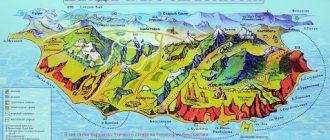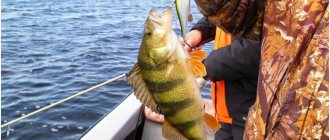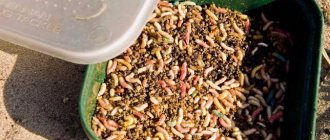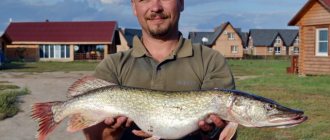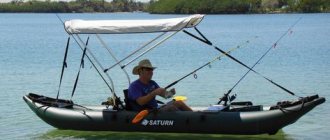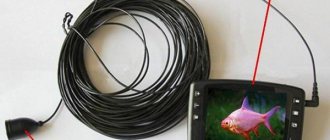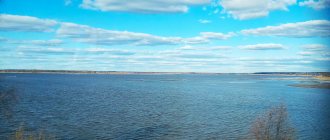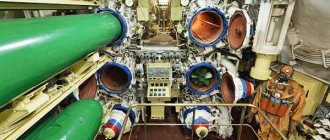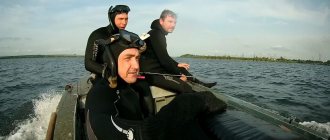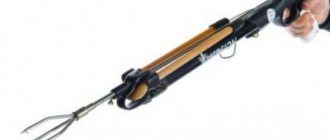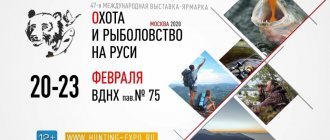What is spearfishing on the Volga? This river is considered one of the largest on the planet. It has always been famous for its large quantity of fish. Its maximum diversity is typical for the delta, which occupies a significant territory. It forms an analogue of a triangle, the top point of which is located just above Astrakhan. The sides here are the main channel and the large tributary Buzan.
Competitions
Spearfishing on the Volga attracts hundreds of amateurs from different parts of our country. Every year, competitions for the Russian Federation Cup are held in the waters of the Varvarovskoye Reservoir. Volgograd welcomes fans of this unusual sport with great enthusiasm.
Where are the best places for spearfishing on the Volga? Experts consider the Karpovskoye Reservoir to be promising for fishing. In the navigable Volga-Don Canal, hunters look for small pike and crucian carp in the reeds.
The Don, flowing through the territory of the Volgograd region, does not have working visibility for hunting. But there is the Karpovka River, in which there is no bloom of water, and visibility is two meters. For the most part, you can hunt small fish here.
Spearfishing in Astrakhan is allowed!!!
Spearfishing in Astrakhan and the Astrakhan region on the Caspian Sea and in the Volga delta is very popular. There are several tens of thousands of active underwater hunters in our country. Spearfishing and fishing have the same permitted periods and the same fish catch rates. Unlike the most popular methods of fishing - with a jig, with a spinner, with a float, in which small fish are caught, the object of underwater hunting is large fish. In terms of communication with nature, underwater hunters even benefit, since they also have the opportunity to admire a very special, sometimes fabulously beautiful, underwater world.
Spearfishing is a rare and in many ways unusual sport that places high and varied demands on its fans. Its main feature is that a person spends the whole time hunting in an alien aquatic environment. It happens to meet muskrats and turtles underwater. The uniqueness of the delta for underwater hunters lies in the huge variety, quantity and weight quality of the fish living in its expanses, as well as the presence of magnificent areas of clear water filtered through reed fields.
A paradise for underwater hunters in the Volga delta and on the Caspian Sea. Beginning underwater hunters will be able to try their hand at the rolling part of the Volga delta or on the ilmen. Experienced divers will be able to try their luck in deep-sea pits and black water. The water transparency in the delta is 3-5 meters.
Specifics of the Volga near Volgograd
The Volgograd region is a unique region because hunting is possible here throughout the year. Only in February is there a period when the water up to the dam freezes, as a result of which hunting stops for 1-2 weeks.
Toward the Astrakhan region (below Volgograd) there is a deep and winding channel, so spearfishing becomes a real pleasure. The Lower Volga is characterized by clean water and snarls, which adds extreme excitement to fans of this way of spending free time. In summer, water transparency reaches 4-5 meters. There are also places here where the depth reaches 40 meters.
Maximum visibility in the Volga is observed in winter: transparency reaches 10 meters, there are no special bays. Outside the city there are snags that attract fish.
August on the Volga
The long-awaited August has arrived, and the time has come for us to set off on our pre-planned trip to the Volga. Things are packed into the car: boat, guns, ammunition, cargo. It seems like I haven’t forgotten anything, my wife and daughter are also in their places. And now we are already driving along the well-known M6 Moscow - Volgograd road.
We drive through the slightly boring Ryazan region, famous for its traffic cops in Tambov region, and finally enter the territory of the Volgograd region, greeting it with a horn signal. Steppe landscapes sometimes give way to copses, the weather is excellent, which inspires optimism about the upcoming vacation and spearfishing.
The highway ends, we enter the city - the hero of Volgograd, but we won’t have long to travel along it, since it stretches along the Volga, and crossing it perpendicularly is not difficult. We need to get to the other side of the river, to the Volga - Akhtuba floodplain. You can cross the Volga by ferry or through the Volzhskaya hydroelectric station. We decide to go through the hydroelectric station. We slowly drive along the Volga through the city to the hydroelectric power station, and below us is a powerful dam, and on the right we can see foaming water and breakers.
Having passed the hydroelectric station, we find ourselves in Volzhsky. Having wandered along it, we reach Srednyaya Akhtuba, cross the Akhtuba River over the bridge, and our path lies further. We pass through a series of various villages and hamlets of the Sredne-Akhtuba floodplain, and now we are already at the goal of our journey - at one of the tourist centers hidden in the forest on the banks of the Volga. To be more precise - in the sports and recreation camp of the Volgograd Polytechnic University. We park the car near the house kindly provided to us, and the caretaker Sergei gives us everything we need. Vacation has begun...
The sun slowly sinks below the horizon, turning the sky crimson. The day is coming to an end, and although I prefer to conduct night dives in places surveyed during the day, since there is a current on the Volga, decent depths and many flooded trees, I still decide to conduct reconnaissance in force. It gets dark in August after 21-00. I take out the ammunition, of the three guns I brought, I choose the OMER Scorpio 71 with a reel, since the fish here are quite large, so you need decent fighting power, and the reel will never be a superfluous element. Practice has shown that I saved in vain by reeling in only 20 meters of line. It would be necessary to have at least 40, and preferably 50 meters, since the depths at which the daytime hunt took place were sometimes more than 7 meters, and at night up to 5. When the fish goes into snags, and you are carried by the current, then the reserve will not hurt at all.
Now I’m already on the banks of the Volga. There is no wind, the water is like a mirror. I put on the fins, load the gun, check the Mares flashlight with a 20-watt halogen - everything is fine. I swim about 7 meters from the shore and dive. Visibility is not great, about 1.5 meters, but that’s okay, enough for night hunting. Here I hit my side against a snag that was carried by the current. You have to be careful, the suit can be torn. At the bottom there is a large tree with several trunks, I push off from it and go into the depths - and there he is, a handsome man, lying right on the ground. A shot - and I’m already dragging the carp up. The resistance is weak, since the specimen is small, about 3 kilograms. Having pierced it with a knife, I put it on the kukan and continue to float with the flow. Slowly diving along the shore, I come across its slightly larger brother. The second shot is also successful, I easily attach the second carp to the first. Well, there’s enough for the first fish soup and the roast, and that’s enough for today, because I’m off the road, and the whole hunt is still ahead.
I get out of the river and, without changing clothes, walk through the forest to our camp. The heat of the day has subsided, the air has become cool, and smells of freshness and wormwood. I change clothes in the outdoor shower under a large mulberry tree. The water flows only cold, and instead of a roof there is an August starry sky. The first day is over.
The next morning has arrived, the sun is slowly rising from behind the forest, there is no wind, it’s time to start exploring the reservoir. From a conversation with local residents, workers at the camp site, I learned that grass carp are sometimes found here, and they feed in the creek on the other side. Since we were located on a branch of the Volga, and there was an island in front of us, it was 400 meters to the other shore. My preparations were short-lived, and I was already pumping up the inflatable boat “Nyrok 2”, putting things in it and, pushing off from the shore, I sat down oars. Below me the river slowly flows its waters, not a cloud in the sky, I begin to row, trying to calculate where it will take me.
And here I am at my goal. The sand rustled along the bottom, and the boat, slowing down, sat on the coastal shallows. I go ashore and start putting on a suit with an open pore of 5 mm. I decide to drag the boat along with me on a rope, sometimes throwing it when I have to dive too deep, since returning for it in the presence of a current is quite inconvenient. There is practically no current in the backwater, the bottom is covered with green moss (the favorite food of grass carp), and in some places there are dense thickets of long algae. Visibility is rather poor, 1.5-2.5 meters, and varies in different places. I swim slowly, carefully examining the thickets of grass; the depth ranges from 1.5 to 3 meters. Sometimes a small hybrid, or, as it is called here, “dushman” or “buffalo” flashes in the thickets, but it is not the subject of my interest. And now my caution and perseverance are rewarded. On the left side, on the line of battle, a giant tail flashes, and before I have time to figure out what’s going on, I instinctively shoot where the body of the fish should be. Eat! The reel unwinds a little from the jerk, I loosen it and give the fish the opportunity to choose the line so as not to give it support to get rid of the harpoon. The “wily” fish rushes past me, using the “Dive” as cover, and tries to stay on the other side of the boat, and then begins to walk in circles, getting the rope tangled in the grass. I try to pull out the grass to free the tangled line, but this only complicates the situation, raising the turbidity. During one of the fish’s passages past me, I notice that the harpoon sits securely in the hard part of the back, both long (which is important) petals are open, and no escape is expected. Then I begin to select a rope, approaching my trophy, and now my hand is already feeling the gills - there is contact, now it will not go away. I drag all this “equipment” along with the boat into shallow water, now it’s already the bottom, I get up and, holding the harpoon, throw the fish into the boat, take the oar with the other hand, and after two blows the fish calms down. I look at her carefully. Bah! Yes, this is not a carp - the upper fin is not the same, and the head is different. Grass carp weighing under 10 kilograms! The copy is worthy, so I decide to cross to the other side, where my wife and daughter are on the beach with a camera. (Photos 1 and 2)
Several days passed, my diving continued, among the caught fish there were carp, pike, pike perch, and even burbot. It's time to look for more worthy specimens, not paying attention to pike and other fish smaller than 2-3 kg.
But then my school friend Evgeniy arrived and said that his family preferred pike to all fish, and he would be glad if I shot something for him. We decide to go hunting with him at night. Naturally, I am in the water, he is along the shore.
And now we are already busy with business. Evgeny stumbles over snags on the shore, and I, having dived, go into the depths. A flashlight flashing on the shore creates a feeling of company, which dulls the usual vigilance and makes me want to dive deeper, although how can it help me? The main danger on the Volga comes from broken nets and, even worse, abandoned sturgeon fishing gear with giant hooks and wire bases. I see several flooded trees, I need to dive in time so as not to be carried by by the current. I dive. The depth is 5 meters, I begin to slowly approach the shore. Yeah, these are the roots of a tree, which means I’m at the beginning of the blockage, and here is a hole, and the current is smaller. Moving forward, light a candle with a lantern. Here are the trunks of a large tree and - oh, miracle! — under the trunk hangs like a dirigible, a meter-long little dowry.
The distance is small, about 1.5 meters, I shoot quickly and, as it turns out, inaccurately. Som leaves. With a feeling of deep disappointment, I surface and tell Evgeniy about what happened.
The hunt continues. In front of me is another little hole where there are a couple of fallen trees. Trying not to make any noise, I dive under the trees. The depth is small, 2 meters, and even less towards the shore along the trunks. Here, under the water, bizarre silhouettes of trees are visible, I make my way further, trying not to get my suit caught on the branches and illuminating my path with a flashlight, moving from left to right. During one of these passages, a beam of light snatches the spotted side of a pike from the darkness. It stands very comfortably, without making any sudden movements, I take aim, and bang - the harpoon pierces the pike right through. She immediately goes under the snags, tangling a fair amount of the line. Having caught my breath, I dive after her. Here she is, she hasn’t gone far, she’s standing under a snag. I take it under the prickly gills, fortunately I have cloth gloves on my hands. The pike begins to desperately resist, but this no longer gives any results. After diving a little more, I untangle the line and head to the shore where Evgeniy walks. After weighing, the pike turned out to be 6.2 kg, and my friend took it home as a gift. (Photo 3)
I would also like to mention one case of night hunting for carp. Many people at the camp site already knew that I hunted successfully and showed interest in it. One day the chief supply officer, Valera, comes up to me and asks if he could go hunting with me and see how it all happens. I promise to take it someday. Then he says that he could take me to the other side at night and accompany me on a kayak while I dive. This is already a more interesting proposal, since I will be able to dive in places that are inaccessible to me alone at night. I agree, and we agree to set off as soon as it gets dark.
As darkness falls, a friendly company of helpers, led by Valera and Tikhonych, carry the kayak to the shore. All I have to do is sit in it. And so Valera and I row rhythmically and rush to the opposite bank of the river. There are almost no mosquitoes, I lowered my balaclava and can listen to the sounds of the night. The boat approaches the shore. I’m already in a suit, so I immediately start hunting, and Valera follows me in a kayak. I begin to examine the bottom dive by dive. The depth is 4-5 meters, the bottom is muddy with shell rock, there are no snags, visibility is poor, about one meter. There is no fish in sight, and suddenly I almost collide head-on with a large carp, I manage to shoot, but the harpoon ricochets, and the carp disappears in the darkness. Frustrated, I emerge and tell everything to Valera, who recommends that I look for this carp again, but, most likely, it is already far gone. However, the hunt continues. Literally on the second dive I come across a flooded tree. This is already more interesting. I slowly swim along it, already shining the spare Lumun 6, and I see: under the trunk there is a large carp, the same one or another, I don’t know. I approach him from the tail and shoot “under the scales.” He quickly rushes under the snag, dragging the line with him, I loosen the reel and emerge shouting “Yes!” I call Valera over and hand him the gun, asking him to unwind the reel if the line gets tight. Having caught my breath, I dive and walk along the rope. Here she goes under the snags, I draw a mental line where she should go, and, floating over the tree, I descend in this place. Here is my carp, fighting on a harpoon, and not even pierced through. I grab it with my hand and send the harpoon to the through wound. Taking the fish from both sides by the harpoon, I begin to float up. Now I’m already on the surface, I’ve taken a breath of air, I begin to swim to the shore, pulling the line behind me. My legs have already reached the bottom, but the supply of rope on the reel has run out, I clamp one end of the arrow under my arm, and the other with the palm of the same hand, take out a knife with my free hand and, cutting the line, go ashore with my prey. Kneeling down, I press the carp to the ground and pierce its head with a knife. The specimen turned out to weigh 8 kg. Valera is also happy, the excitement of the fight rubbed off on him. We decide to finish here, put everything in the boat and sit down at the oars. On the other side they are already waiting for us, we see light signals and hear sound signals. This helps us figure out where to go so that we are taken to the right place.
We are already mooring to the shore, and those who meet us are waiting with interest for stories about the results of our hunt. The carp shown evokes strong emotions in them. We are going to the camp. When we return, we take a group photo with the fish. The next day we agree to cook carp and celebrate a successful hunt. (Photos 4 and 5)
Two weeks of vacation flew by quickly, and we had pleasant memories of hunting and relaxing, communicating with nature and people, and some frozen fish to treat our colleagues at work.
Volga Delta
Unique natural conditions make it possible to satisfy even the most demanding fans of spearfishing. They flock to these places for catfish, carp, crucian carp, and pike.
What else is different about spearfishing on the Volga? Samara is characterized by shallow ilmen lakes with clear water. There are especially many fishermen and hunters here in the spring.
When can you hunt?
From November to March, the fish are inactive; they go to winter under snags, in wintering pits. It is prohibited to take it at this time. You can go winter fishing only with jigs and fishing rods. But from April to October it is quite possible to prepare for spearfishing, getting real pleasure from such a pastime. On the Volga you can find places designed specifically for beginners. However, professionals recommend taking an experienced instructor for your first spearfishing.
What to take with you to the rays and the Volga delta?
In the Lower Delta or Forward Delta, you can hunt effectively from April to November. In the ilmen, on the raskats and on the Main Bank, you can hunt effectively from April to May and from August to November. It is advisable to select the travel time based on weather conditions.
It is advisable to have with you:
- The standard set of an underwater hunter is a wetsuit (in summer and early autumn 3-5 mm, in spring and late autumn - 7 mm), gloves, socks, mask, snorkel, weight belt, fins, cukan.
- two guns, preferably equipped with a reel, for comfortable fishing of large specimens. One is longer - 60-75 cm for hunting in open water and along the edges of snags, and the other is short - 40-50 cm for hunting in the grass and underwater rubble. Spare harpoons are a must, as large catfish can easily bend or tear off the standard harpoon.
- underwater flashlight for inspecting deep holes and grass roofs.
- a knife to immobilize large fish (and there will be one) and as a necessary safety feature.
Well, it’s probably worth mentioning the need to have all sorts of mosquito repellents with you, such as autane and fumitox. Although in the Lower Delta there is no such scourge of fishing bases located upstream as midges, there are and will always be mosquitoes in the delta. So you need to be prepared for this. It is also advisable to take a light windproof raincoat or suit with you. The fact is that you often have to make long journeys by boat from one hunting place to another, and being in a boat in a wet wetsuit, blown by the wind, is an unpleasant experience. If you put a raincoat over your still wet suit, or even better if it is a suit with trousers, then the evaporation will stop and you will be much warmer.
Spearfishing will bring pleasure to the most demanding diver. It is too interesting, productive and diverse both in terms of the types of fish available, and in hunting methods, and in relief. So, if you are tired of plowing the familiar river next to your dacha to the last blade of grass in search of chubs and ides that have not yet been knocked out by electric fishing rods, and you want a really strong impression, then, having chosen a date with the best weather conditions, buy yourself a plane ticket or train or get in the car and come to us!!!
See also:
Order on permitting spearfishing in Astrakhan and the Astrakhan region
On the implementation of spearfishing in Astrakhan and the Astrakhan region
Equipment Features
Let's look at the equipment without which you can't go fishing. A neoprene suit is the first required piece of equipment. Professionals advise taking two at once: one for summer (thinner), the second for spring and autumn hunting (thicker). A wetsuit performs three functions at once: protection, camouflage, and thermal insulation. Also for spearfishing you need fins, gloves, and socks. Long fins are uncomfortable. They can get entangled in underwater plants, of which there are quite a lot in the Volga.
When choosing a diving mask, it is important to pay attention to its tightness, viewing angle, and comfort. Before use, professionals recommend treating the glass of the mask with a spray or gel antifog (another non-toxic substance) to prevent the mask from fogging up.
A tube is attached to the mask to avoid falling over when touching vegetation, as well as its complete loss. Professionals recommend purchasing designs that are equipped with both upper and lower valves. Such a system will not produce additional noise when exhaling, and will not interfere with breathing during a long stay under water.
The belt is necessary for securing the knife, as well as for attaching weights. An obligatory piece of equipment is an underwater pneumatic gun. It is advisable to have two arrows in the kit, as the tips can get lost. The gun is selected taking into account the characteristics of the reservoir in which the hunt will take place. Professionals recommend choosing a gun with a high-quality safety and a comfortable grip for the hand (65-70 cm in length). In this case, the hunter will not have problems if he gets into the thickets of reeds, chakan, or lotus. The power of the weapon is enough even to catch a large catfish.
Having collected the necessary equipment, selected a team of like-minded people, and made sure that hunting is allowed, you can safely go to the Volga in search of unforgettable impressions and big trophies.
Getting ready for spearfishing
Underwater hunting in Astrakhan is a special pleasure, because the Volga delta is home to enviable specimens of river predators - catfish, carp, pike. And if you have firmly decided to change your spinning rod or fishing rod to an underwater gun and catch fish in its habitat, let’s figure out what you need for this.
In the most primitive version, for underwater hunting you need fins, a mask, a snorkel, this is the so-called “set No. 1” and plus a gun. A wetsuit protects the hunter's body from cold water. The main division of wetsuits is “dry” and “wet”. The first ones are rather exotic, because... suits of this type are not very comfortable and require very careful care and careful use, because the slightest hole in the rubber and water will get inside and hunting is no longer out of the question. As a rule, “dry” wetsuits are used by professional divers for long and deep-sea diving.
“Wet” suits are made of “neoprene” - an elastic and well-insulated material that fits tightly to the body, essentially being a second skin. A little water gets under such a suit, but quickly heats up due to body heat. When choosing a wetsuit specifically for hunting, many experts strongly recommend purchasing a suit with the so-called “open pore” (“sticky”). These suits do not have neoprene “duplicated” with nylon on the inside, but like bare rubber with tiny pores, which, when putting on the suit, stick to the skin, thereby preventing water from “walking” under the suit. Open-face suits are also much softer, you can breathe freely in them, and the submariner’s movements are not constrained. In addition, due to such tight adhesion, you can comfortably spend several hours in the water. The only peculiarity of the open suit is that it is impossible to put it on “dry”; you have to mix it with water and shampoo and slip inside. However, this procedure is so simple that it does not cause inconvenience even to beginners.
For hunting from May to October, a suit thickness of 5 mm is sufficient. A suit with a thickness of 7 mm will be more versatile, but in the summer it will be hot in it, and in order to avoid heat stroke you will have to run water under the suit. In winter, it is also possible to hunt in the “seven”, but for a short time; the time will directly depend on the cold resistance of the underwater hunter’s body. For winter amateur spearfishing, wetsuits with a neoprene thickness of 9-10 mm are used.
As for the brand itself, the choice is huge, there are suits for every taste and budget. When buying a suit, pay attention to the seams, look outside and inside. Ask to try on the suit. A good store will let you do this without any problems.
Having protected the body, let's not forget about the arms and legs. With legs, everything is simple - you buy neoprene socks, which you put on your legs and tuck the tops under the suit. Choosing the thickness of socks is similar to a wetsuit. With hand protection, you can go this route - wear regular cotton gloves in the summer (or buy 3 mm neoprene ones), for spring and autumn buy either 5 mm gloves or 5-7 mm three-fingered mittens. The last option is warmer. When choosing mittens and gloves, you shouldn’t pay attention to the manufacturer at all, you just need to look at the comfort of sitting on your hand and how much they leak; to do this, just fill them with water.
Only after purchasing socks can you purchase fins, because... You will have to measure them on the sock! In order not to talk for a long time about the choice of fins, let’s say something that is already a kind of axiom for underwater hunters. These should be long hunting fins with a closed heel, i.e. under the sock, not the boot. The size of galoshes and fins must be chosen so that when you put them on your toes, the fins do not sting anywhere, otherwise during the hunt there will only be agony, and your feet will freeze noticeably faster. All fin galoshes are unique - different in rigidity, different in lift height and galosh shape. Therefore, the choice of fins is purely individual. There are also differences in the hardness of the blades. Beginners should take a closer look at softer blades, or accept that the leg muscles will hurt at the initial stage.
Choosing a mask is also easy if you follow the following guidelines. The glass of the mask is made of tempered glass, the seal (the one that fits to the face) is made of dark, opaque silicone, a small space under the mask - although the latter is not particularly relevant for shallow depths. Everything else is simple. We come to the store, look for a suitable option, press the mask to our face and inhale through our nose. The mask should stick to your face and not suck in air from outside. Then we try to tear off the mask. If it comes off with force, the choice is correct. But this is all theory! Practice shows that even a mask chosen in this way can leak, so you will have to try others and, through trial and error, arrive at a convenient option.
It's even easier with tubes. The snorkel for spearfishing should be simple and soft, leave the valve, corrugations, etc. for divers.
There are two pieces of equipment left, without which hunting is impossible - a gun and weight.
We'll leave guns for a separate article - this is a serious topic, just like choosing a wetsuit, since it is also one of the most expensive pieces of equipment designed to last.
What are the loads for? A wetsuit, socks and gloves give the submariner positive buoyancy; to compensate for this, a weight belt is needed. It evens out buoyancy, making it neutral, thereby allowing you to dive and emerge without much effort. For more comfortable breathing, a rubber weight belt (it does not restrict the movement of the abdomen when inhaling) and lead weights are usually recommended. The weight of the cargo is selected experimentally. Typically a 5 mm suit requires 7-8 kg of weights. Thicker suits will require more lead. If your lower back does not tolerate excess load, then there are so-called “unloaders” - a load securing system with shoulder straps and a wide “frying pan” on the back. This can significantly reduce the load on your back. You can make a belt yourself, the main thing is that its buckle allows you to unfasten and remove the belt in one movement in an emergency. You definitely don’t need to chase after a “company” when choosing a belt; ours are cheaper and no less high-quality. Many hunters pour the loads themselves.
That's all about the underwater hunter's equipment in a nutshell. It is worth noting that now choosing the necessary equipment is no longer a problem; there are a lot of stores with quite competent sellers who will help you choose everything you need for spearfishing. But then the most interesting thing begins - a trip to spearfishing in the Volga delta and the first attempts to find fish.
